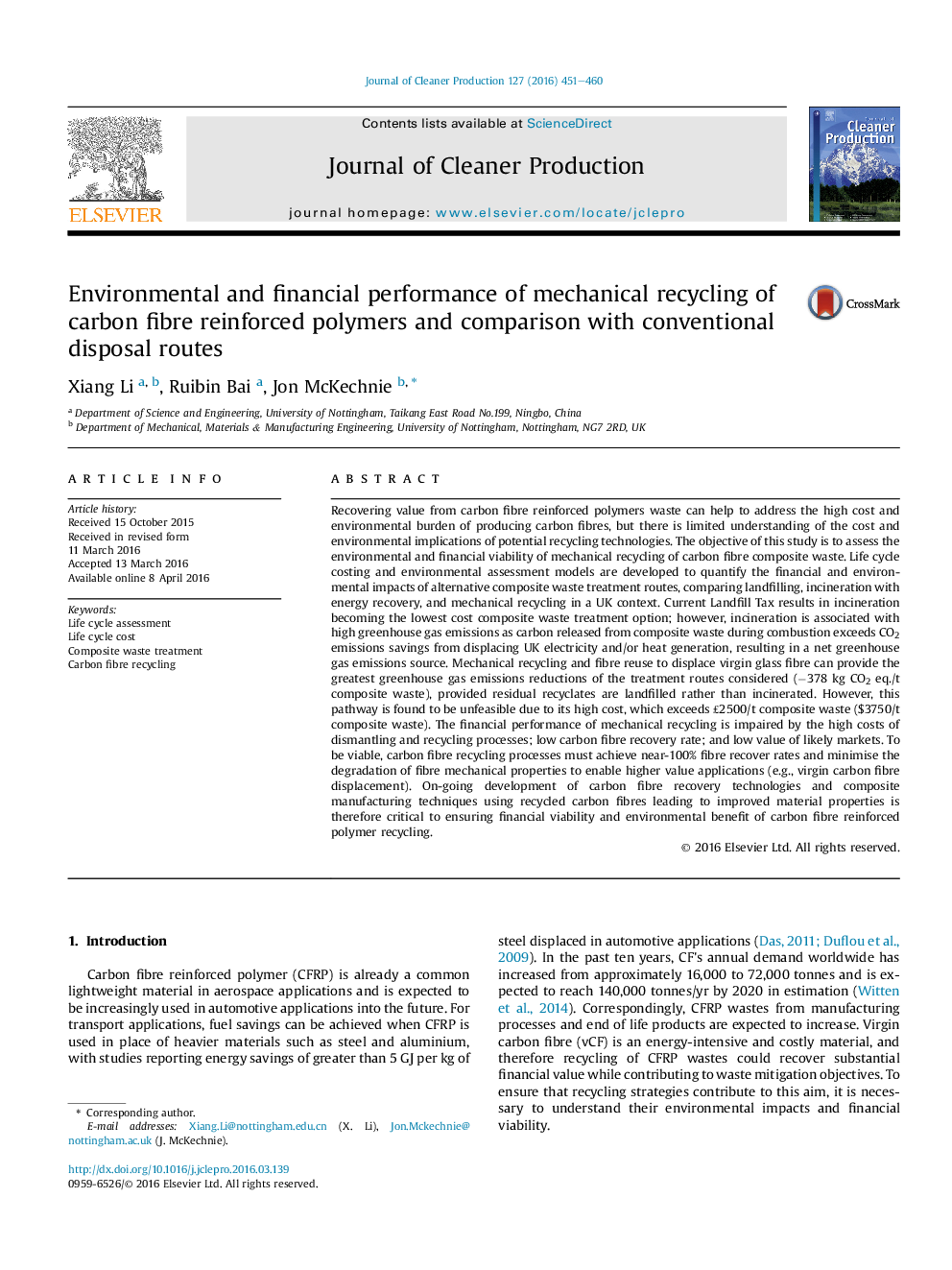| کد مقاله | کد نشریه | سال انتشار | مقاله انگلیسی | نسخه تمام متن |
|---|---|---|---|---|
| 1744103 | 1522122 | 2016 | 10 صفحه PDF | دانلود رایگان |
Recovering value from carbon fibre reinforced polymers waste can help to address the high cost and environmental burden of producing carbon fibres, but there is limited understanding of the cost and environmental implications of potential recycling technologies. The objective of this study is to assess the environmental and financial viability of mechanical recycling of carbon fibre composite waste. Life cycle costing and environmental assessment models are developed to quantify the financial and environmental impacts of alternative composite waste treatment routes, comparing landfilling, incineration with energy recovery, and mechanical recycling in a UK context. Current Landfill Tax results in incineration becoming the lowest cost composite waste treatment option; however, incineration is associated with high greenhouse gas emissions as carbon released from composite waste during combustion exceeds CO2 emissions savings from displacing UK electricity and/or heat generation, resulting in a net greenhouse gas emissions source. Mechanical recycling and fibre reuse to displace virgin glass fibre can provide the greatest greenhouse gas emissions reductions of the treatment routes considered (−378 kg CO2 eq./t composite waste), provided residual recyclates are landfilled rather than incinerated. However, this pathway is found to be unfeasible due to its high cost, which exceeds £2500/t composite waste ($3750/t composite waste). The financial performance of mechanical recycling is impaired by the high costs of dismantling and recycling processes; low carbon fibre recovery rate; and low value of likely markets. To be viable, carbon fibre recycling processes must achieve near-100% fibre recover rates and minimise the degradation of fibre mechanical properties to enable higher value applications (e.g., virgin carbon fibre displacement). On-going development of carbon fibre recovery technologies and composite manufacturing techniques using recycled carbon fibres leading to improved material properties is therefore critical to ensuring financial viability and environmental benefit of carbon fibre reinforced polymer recycling.
Journal: Journal of Cleaner Production - Volume 127, 20 July 2016, Pages 451–460
